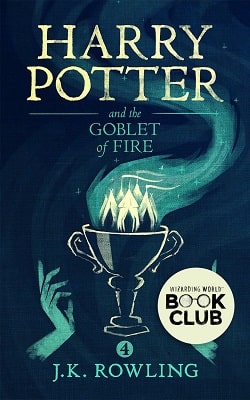She followed David silently through one locked storage room after another. She saw books, a skull on a shelf, what seemed old clothing heaped on the floor, furniture, oil paintings, trunks and strongboxes, dust.
"All this paraphernalia," David said, with a dismissive gesture, "is in one way or another connected to our blood-drinking immortal friends. They tend to be a rather materialistic lot, actually. And they leave behind them all sorts of refuse. It is not unknown for them to leave an entire household, complete with furnishings, clothing, and even coffins-very ornate and interesting coffins-when they tire of a particular location or identity. But there are some specific things which I must show you. It will all be rather conclusive, I should think. "
Conclusive? There was something conclusive in this work? This was certainly an afternoon f
or surprises.
David led her into a final chamber, a very large room, paneled in tin and immediately illuminated by a bank of overhead lights.
She saw an enormous painting against the far wall. She placed it at once as Renaissance, and probably Venetian. It was done in egg tempera on wood. And it had the marvelous sheen of such paintings, a gloss that no synthetic material can create. She read the Latin title along with the name of the artist, in small Roman-style letters painted in the lower right corner.
"The Temptation of Amadeo" by Marius
She stood back to study it.
A splendid choir of black-winged angels hovered around a single kneeling figure, that of a young auburn-haired boy. The cobalt sky behind them, seen through a series of arches, was splendidly done with masses of gilded clouds. And the marble floor before the figures had a photographic perfection to it. One could feel its coldness, see the veins in the stone.
But the figures were the true glory of the picture. The faces of the angels were exquisitely modeled, their pastel robes and black feathered wings extravagantly detailed. And the boy, the boy was very simply alive! His dark brown eyes veritably glistened as he stared forward out of the painting. His skin appeared moist. He was about to move or speak.
In fact, it was all too realistic to be Renaissance. The figures were particular rather than ideal. The angels wore expressions of faint amusement, almost bitterness. And the fabric of the boy's tunic and leggings, it was too exactly rendered. She could even see the mends in it, a tiny tear, the dust on his sleeve. There were other such details--dried leaves here and there on the floor, and two paintbrushes lying to one side for no apparent reason.
"Who is this Marius?" she whispered. The name meant nothing. And never had she seen an Italian painting with so many disturbing elements. Black-winged angels . . .
David didn't answer. He pointed to the boy. "It's the boy I want you to observe," he said. "He's not the real subject of your investigation, merely a very important link. "
Subject? Link. . . . She was too engrossed in the picture. "And look, bones in the corner, human bones covered with dust, as if someone had merely swept them out of the way. But what on earth does it all mean?"
"Yes," David murmured. "When you see the word 'temptation,' usually there are devils surrounding a saint. "
"Exactly," she answered. "And the craft is exceptional. " The more she stared at the picture, the more disturbed she became. "Where did you get this?"
"The order acquired it centuries ago," David answered. "Our emissary in Venice retrieved it from a burnt-out villa on the Grand Canal. These vampires are endlessly associated with fires, by the way. It is the one weapon they can use effectively against one another. There are always fires. In Interview with the Vampire, there were several fires, if you recall. Louis set fire to a town house in New Orleans when he was trying to destroy his maker and mentor, Lestat. And later, Louis burned the Theater of the Vampires in Paris after Claudia's death. " Claudia's death. It sent a shiver through Jesse, startling her slightly.
"But look at this boy carefully," David said. "It's the boy we're discussing now. "
Amadeo. It meant "one who loves God. " He was a handsome creature, all right. Sixteen, maybe seventeen, with a square, strongly proportioned face and a curiously imploring expression.
David had put something in her hand. Reluctantly she took her eyes off the painting. She found herself staring at a tintype, a late-nineteenth-century photograph. After a moment, she whispered: "This is the same boy!"
"Yes. And something of an experiment," David said. "It I was most likely taken just after sunset in impossible lighting conditions which might not have worked with another subject. Notice not much is really visible but his face. " True, yet she could see the style of the hair was of the period. I "You might look at this as well," David said. And this time he gave her an old magazine, a nineteenth-century journal, the I kind with narrow columns of tiny print and ink illustrations. There was the same boy again alighting from a barouche-a I hasty sketch, though the boy was smiling.
"The article's about him, and about his Theater of the Vampires. Here's an English journal from 1789. That's a full eighty years earlier, I believe. But you will find another very thorough description of the establishment and the same young man. " "The Theater of the Vampires . . . " She stared up at the auburn-haired boy kneeling in the painting. "Why, this is Ar-i rnand, the character in the novel!"
"Precisely. He seems to like that name. It may have been Amadeo when he was in Italy, but it became Armand by the eighteenth century and he's used Armand ever since. "
"Slow down, please," Jesse said. "You're telling me that the Theater of the Vampires has been documented? By our people?" I "Thoroughly. The file's enormous. Countless memoirs describe the theater. We have the deeds to the property as well. And here we come to another link with our files and this little novel, Interview with the Vampire. The name of the owner of the theater was Lestat de Lioncourt, who purchased it in 1789. And the property in modern Paris is in the hands of a man by the same name even now. "
"This is verified?" Jesse said.
"It's all in the file," David said, "photostats of the old records and the recent ones. You can study the signature of Lestat if you like. Lestat does everything in a big way-covers half the page with his magnificent lettering. We have photostats of several examples. We want you to take those photostats to New Orleans with you. There's a newspaper account of the fire which destroyed the theater exactly as Louis described it. The date is consistent with the facts of the story. You must go over everything, of course. And the novel, do read it again carefully. "
By the end of the week, Jesse was on a plane for New Orleans. She was to annotate and document the novel, in every way possible, searching property titles, transfers, old newspapers, journals-anything she could find to support the theory that the characters and events were real.
But Jesse still didn't believe it. Undoubtedly there was "something here," but there had to be a catch. And the catch was in all probability a clever historical novelist who had stumbled upon some interesting research and woven it into a fictional story. After all, theater tickets, deeds, programs, and the like do not prove the existence of bloodsucking immortals.
As for the rules Jesse had to follow, she thought they were a scream.
She was not allowed to remain in New Orleans except between the hours of sunrise and four p. m. At four p. m. she had to drive north to the city of Baton Rouge and spend the nights safe within a sixteenth-story room in a modern hotel. If she should have the slightest feeling that someone was watching her or following her, she was to make for the safety of a large crowd at once. From a well-lighted and populated place, she was to call the Talamasca long distance in London immediately.















